"Everything has a natural explanation. The moon is not a god, but a great rock." -Anaxagoras
The Moon, as you well know, is one of the spectacular sights of the night sky, especially when it's full.
Even those of us with imperfect vision can see differences between the large, dark areas (known as maria) of dried-up lava beds and the bright, white mountainous regions. But through even the smallest of telescopes or binoculars, brilliant features -- invisible to the naked eye -- emerge.
One of the largest craters on the Moon, Copernicus, is just barely invisible to the naked eye, and easily visible with binoculars. At 93 km in diameter, Copernicus is notable for being relatively young for a huge crater -- only 800 million years old -- and also for being very isolated, as its found in the middle of one of the great lunar maria!
It was also famously imaged by Apollo 17, above. But it's impossible to see the Moon as well from Earth as we can from up close.
Luckily for you, we just finished making the most accurate map ever of the near side of the Moon!
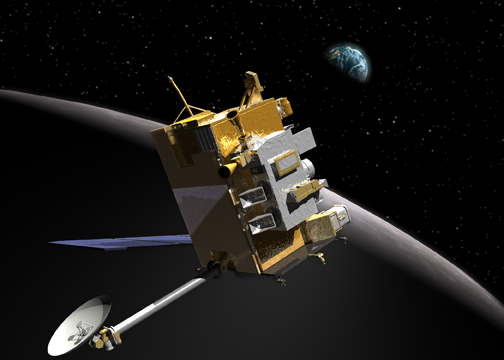
Say hello to NASA's Lunar Reconnaissance Orbiter, or LRO for short, orbiting the Moon just 50 kilometers above the surface. (All subsequent images come from LRO/NASA/Goddard, and the men and women working with that data.) Scientists have just constructed the most accurate map of the near side of the Moon -- the side we can see from Earth -- from the last year of LRO data! It's nothing you haven't seen before...
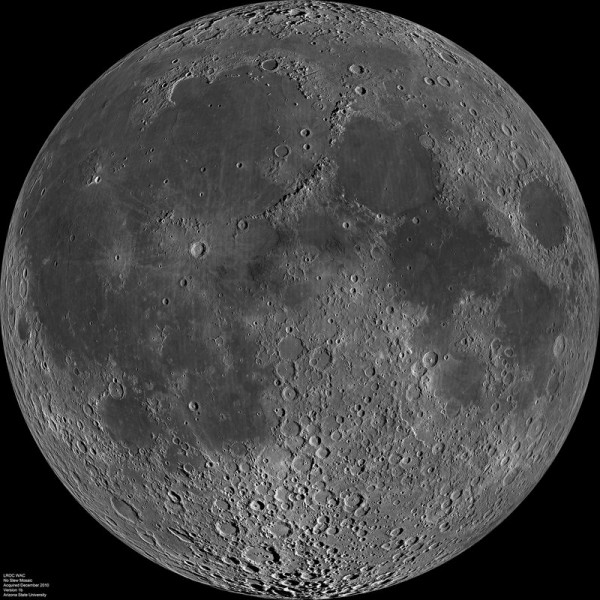
I mean, it's the Moon, right?
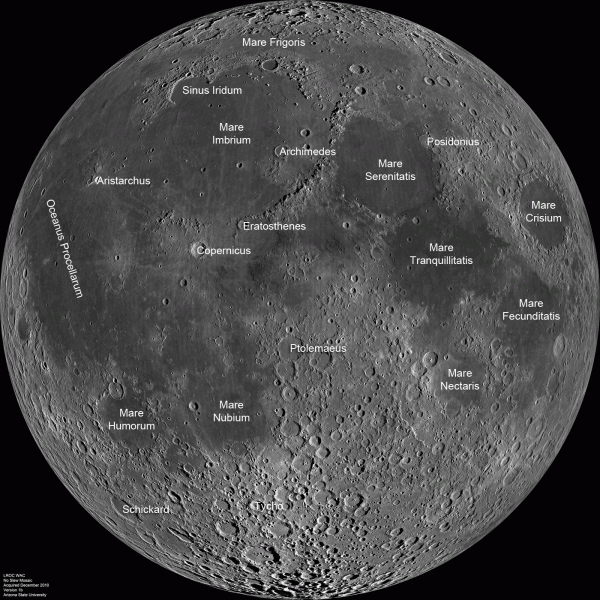
You can click, above, for a 1400 x 1400 pixel, labeled image of the near side of the Moon. But why settle for mere computer wallpaper, when you can go for the most detailed map ever? (Click that link at your own risk!)
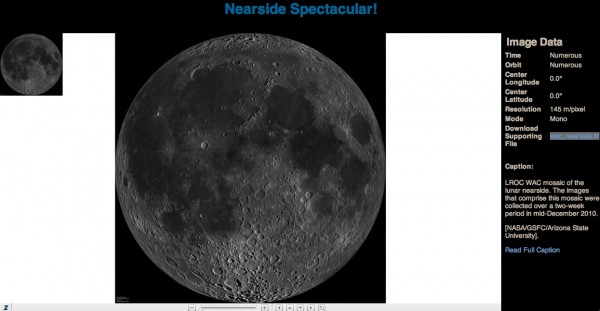
Because if you go here instead, you can zoom in to the highest resolution available anywhere on the near side of the Moon! And just to show you how much fun you can have with this, I decided to post some shots of Copernicus Crater!
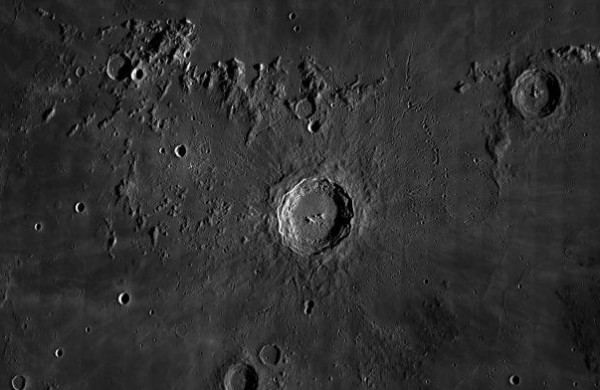
Still zoomed-out pretty far, you can get a pretty good appreciation for how hard the Moon must've been hit to create this crater! Take a look at the striations leading away from the crater, and at the great peaks in the center. (I can't help but note the similarity to a water drop.)
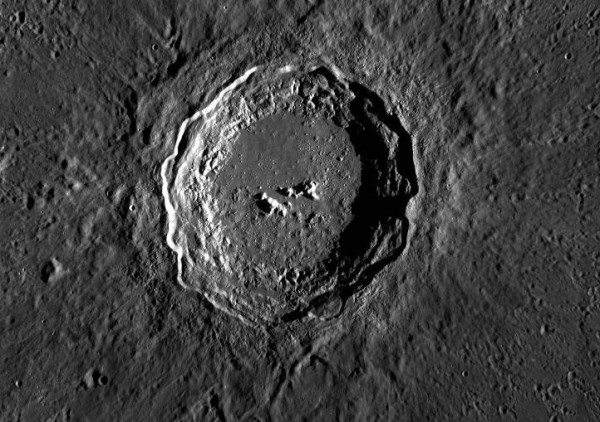
But of course, we can go in farther. And you can see the huge relief in shadow and light, with the Sun off to the right of the picture. You can also notice tiny, little craters superimposed atop the ridges of Copernicus.
But this isn't even close to as far as we can look.
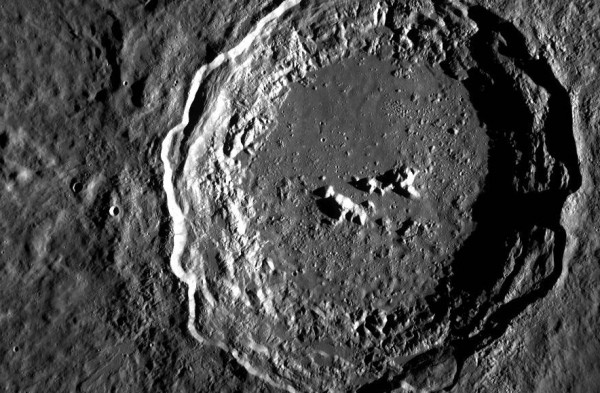
Now we're talking! Don't forget that this crater is 93 km across, or more than three times as wide as the Grand Canyon!
But I want to take you in to as close as individual pixels will let me...
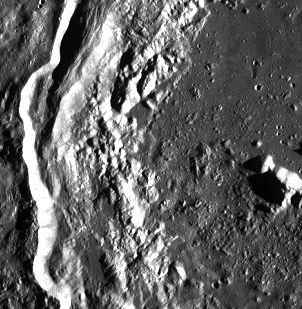
And at this scale, each pixel is just 145 meters on a side! Check out the different layers of the crater wall. Impressive, to be sure. But remember, you have the whole Moon to play with at this resolution! So what are you doing here?
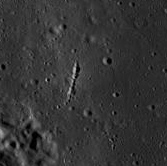
See if you can find my favorite tiny lunar feature, above. (I named it "Snakey.")
So go. Play. Enjoy. And tell me if you find anything cooler than Snakey!

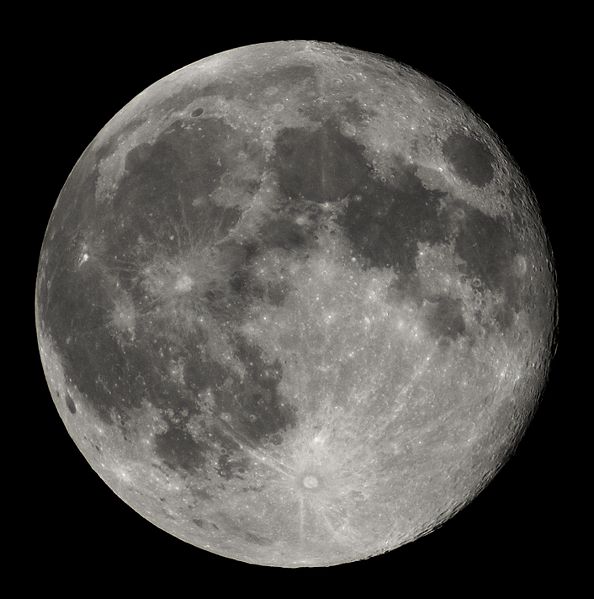
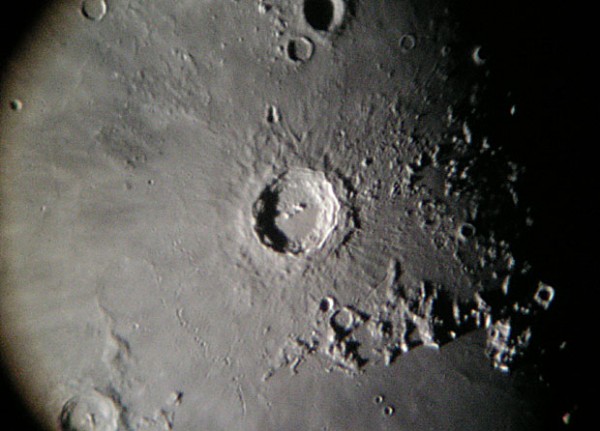
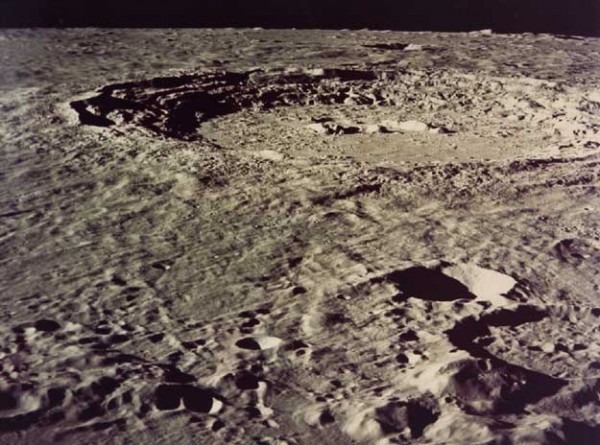
Somebody doesn't like you linking to their water drop.
That's really neat. I'm having trouble understanding the scale. Is it possible to see any of the stuff left behind by the astronauts? I'm assuming not, but I figured I'd ask. But if it is, where do I look?
Hi Ethan, maybe I've found something more interesting than your "Snakey" - a giant python :-). Look about a third of the way between the "s" of Mare Frigoris near the top of the picture and the "m" of Archimedes (start at the "s"). You'll see the edge of a Mare, lots of ridges, and a long canyon. Interestingly, the bottom of the canyon contains something similar to a riverbed, I suppose a remnant of an ancient lava flow. The whole canyon is astonishingly straight - do you have any idea how long it is?
Regarding what you can see:
In any digital image, the smallest size object you can resolve is about 3 pixels across. For example, a standard 1 meter resolution air photo is just about fine enough to see a 3 meter long car.
If this image has 145 meter pixels, then you probably can't see anything smaller than about 435 meters = about 1400 feet across. So the smallest things you can distinguish in that image might be about 5 football fields long. I expect that anything we left on the moon (lunar modules, lunar rover, flag, etc) is invisible here.
This is still a great image though, and lots of fun to look at.
My lunar features:
http://cyberskald.com/repository/Lunar/lunar%20curiosity.gif
http://cyberskald.com/repository/Lunar/Deep_canyon.gif
Yes, it is. LRO has imaged the landing sides too. With a resolution of up to (I think) 3 meters. So it is possible to recognize the Apollo leftovers. Just remember, because of resolution, that you wan't see each an every screw, but all in all the LRO images match the photos or drawings done during the days of Apollo.
http://www.nasa.gov/mission_pages/LRO/multimedia/lroimages/apollosites…
http://www.nasa.gov/mission_pages/apollo/revisited/index.html
Hi Ethan,
Thanks for a great blog which I just recently found. Any chance you could make a post regarding our Moon and twhat the latest theories are regarding it? I ask because I was inspired by the amazing picture you posted and hence went googling for info on our Moon and found that we seem to know very little! Some examples:
1. The current most favored hypothesis for the origin of the Moon is apparently the Giant Impact hypothesis: http://en.wikipedia.org/wiki/Giant_impact_hypothesis But there are a lot of things, as the article describes, which can't be explained by this hypothesis.
2. Why does the near side of the Moon look so different from the far side? The near side has lots of "seas" which are apparently lava flows (from where and how?), while the far side is almost purely craters. Why?
3. A really interesting hypothesis I came across while googling was the Late Heavy Bombardment hypothesis. Apparently, almost no rocks have been found on Earth or the Moon older than 3.9 billion years (as opposed to tiny minerals like zircon). The Late Heavy Bombardment hypothesis holds that not only were the majority of craters on the Moon created by this bombardment...of comets!...but that the majority of the Earth's water stems from this bombardment. A linky: http://news.nationalgeographic.com/news/2009/08/090805-earth-oceans-com…
So, how about a little post on the latest news? :-)
Best regards,
Jens
Great pics! The "crater chains" are interesting: 100 - 200 years ago people would have figured they just *had* to be evidence of intelligent life on the Moon if they'd had the scopes to resolve them!
While there may be no real scientific need (since I'm sure orbiting lunar cameras have done better) it would be interesting to see what the Hubble could do with some selected lunar features. Anyone here know what resolution the Hubble has achieved with Moon photos? Samples online to compare with these?
On a related note: the full caption to the detailed pic indicates that the LRO takes detailed pics of almost the entire surface every month. Has anyone made an estimate, based on the number and age of craters we can resolve, as to how long on average we might have to wait to see a "new" crater appear on the moon? And would a "new" crater be more likely on the far side than the near side (as debris comes rushing in toward Earth)?
- MJM
Waaw,great picrures.Your pictures looks so sharp .Maybe if you have a non B/W one to see more of it :)
Great pics! The "crater chains" are interesting: 100 - 200 years ago people would have figured they just *had* to be evidence of intelligent life on the Moon if they'd had the scopes to resolve them!
While there may be no real scientific need (since I'm sure orbiting lunar cameras have done better) it would be interesting to see what the Hubble could do with some selected lunar features. Anyone here know what resolution the Hubble has achieved with Moon photos? Samples online to compare with these?
On a related note: the full caption to the detailed pic indicates that the LRO takes detailed pics of almost the entire surface every month. Has anyone made an estimate, based on the number and age of craters we can resolve, as to how long on average we might have to wait to see a "new" crater appear on the moon? And would a "new" crater be more likely on the far side than the near side (as debris comes rushing in toward Earth)?
- MJM
Great pics! The "crater chains" are interesting: 100 - 200 years ago people would have figured they just *had* to be evidence of intelligent life on the Moon if they'd had the scopes to resolve them!
While there may be no real scientific need (since I'm sure orbiting lunar cameras have done better) it would be interesting to see what the Hubble could do with some selected lunar features. Anyone here know what resolution the Hubble has achieved with Moon photos? Samples online to compare with these?
On a related note: the full caption to the detailed pic indicates that the LRO takes detailed pics of almost the entire surface every month. Has anyone made an estimate, based on the number and age of craters we can resolve, as to how long on average we might have to wait to see a "new" crater appear on the moon? And would a "new" crater be more likely on the far side than the near side (as debris comes rushing in toward Earth)?
- MJM
Great pics! The "crater chains" are interesting: 100 - 200 years ago people would have figured they just *had* to be evidence of intelligent life on the Moon if they'd had the scopes to resolve them!
While there may be no real scientific need (since I'm sure orbiting lunar cameras have done better) it would be interesting to see what the Hubble could do with some selected lunar features. Anyone here know what resolution the Hubble has achieved with Moon photos? Samples online to compare with these?
On a related note: the full caption to the detailed pic indicates that the LRO takes detailed pics of almost the entire surface every month. Has anyone made an estimate, based on the number and age of craters we can resolve, as to how long on average we might have to wait to see a "new" crater appear on the moon? And would a "new" crater be more likely on the far side than the near side (as debris comes rushing in toward Earth)?
- MJM